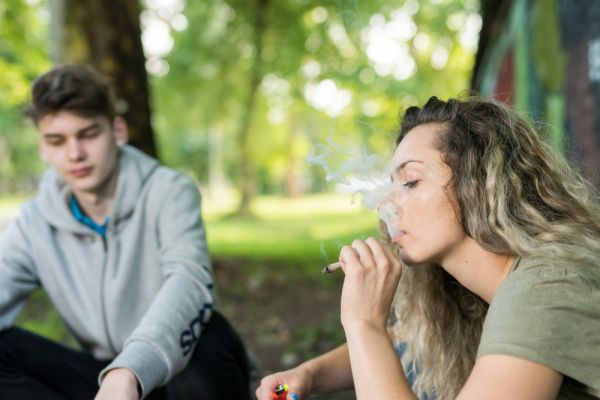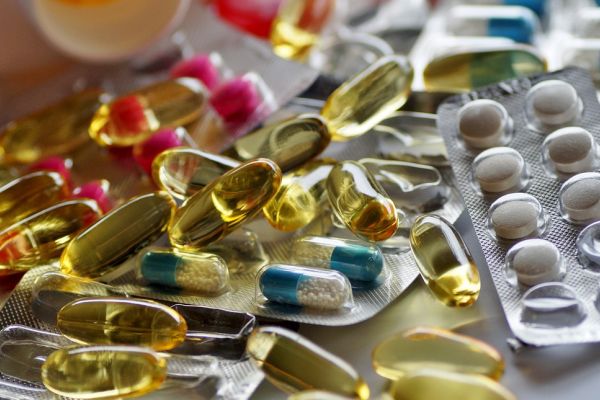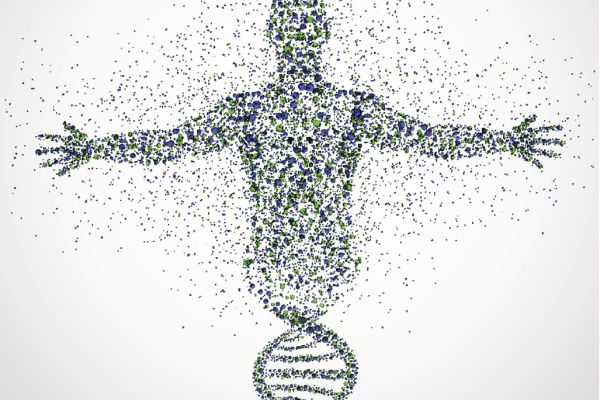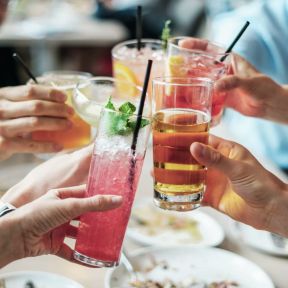Recovery from Addiction
Recovery from addiction is not only possible, it is the rule, rather than the exception. According to the latest U. S. National Survey on Drug Use and Health, more than 75 percent of people addicted to alcohol or drugs recover—their condition improves and substance use no longer dominates their life. That is not to say that recovery is easy. It is often a long and bumpy path, and relapse is nearly inevitable—but that doesn’t spell the end of recovery. There are coping strategies to be learned and skills to outwit cravings, and practicing them not only tames the impulse to resume substance use but also gives people pride and a positive new identity that hastens recovery.
There is no one pathway to recovery. Only 1.0 percent of people receive substance abuse treatment as an inpatient or outpatient at a specialty facility. Some people seek medical treatment at a hospital. Others seek help from an outpatient mental health facility. Many choose to recover without using any clinical services. The single most popular path is the use of peer support groups in the community.
On This Page
Recovery starts immediately with stopping use of a substance. For many of those who are addicted, enduring even that action is unimaginable. And yet, it is just the first step. What must follow is the process of behavior change, through which the brain gradually rewires and renews itself. That process can take months, or more. And there are many ways to accomplish that.
There are no lab tests that define recovery and no universally agreed-on definition of recovery. For many experts, the key components of addictive disorder are compulsive drug use that continues despite detrimental consequences, and the development of cravings with the inability to control use. Addiction develops over time, in response to repeated substance use, as the action of drugs changes the way the brain responds to rewards and disables the ability to control desire for the drug.
Under all circumstances, recovery takes time because it is a process in which brain cells gradually recover the capacity to respond to natural sources of reward and restore control over the impulse to use. Another widely applied benchmark of recovery is the cessation of negative effects on oneself or any aspect of life. Many definitions of recovery include not only the return to personal health but participation in the roles and responsibilities of society.
Subscribers to the disease model of addiction generally believe that recovery extends well beyond any benchmarks to be a lifelong process. Nevertheless, data show that five years after substance use is stopped, the risk for relapse is no greater than for anyone else in the general population.
The first step in the recovery process is stopping drug use. The endpoint is voluntary control over use and reintegration into the roles and responsibilities of society. Shortly after substance use is stopped, people may experience withdrawal, the onset of unpleasant physical and psychological symptoms —from irritability to shakiness to nausea; delirium and seizures in severe cases. The symptoms can last up to a week or more.
Recovery hinges on successfully changing many deeply rooted behaviors, and how long that takes—months or years—depends on many factors for each individual; most important are avoidance of people and places where drugs are used, having supportive connections with others, learning new strategies for coping, and the availability of opportunities for developing or reconnecting with other interests and sources of reward. Behavioral therapy can be helpful. Relapse is common and experts see it as an opportunity for learning about and overcoming impediments to change.
No matter which pathway of recovery a person chooses, a common process of change underlies them all. The well-researched science of behavior change establishes that addictive behavior change, like any behavior change, is a process that starts long before there’s any visible shift in activity. Studies define five stages of change in addiction recovery.
• Precontemplation: Substance users are unaware that their use is causing problems, although others around them are, and they have no intention of changing behavior.
• Contemplation: Substances users begin to realize that their use has some negative consequences and it might be time to make a change, but they have no commitment to action.
• Decision: Intention develops to take action about the substance use as concrete goals begin to take shape. A start date is set.
• Action: The decision is put into action, with new behaviors learned and practiced. Action may involve contacting a doctor, entering a treatment program, or finding a peer support group.
• Maintenance: New behavior replaces old behavior, and change gains momentum with the desire to make it permanent.
The answer depends on which model of addiction you subscribe to. Those who believe that addiction is a brain disease do not use the word “cure.” Nevertheless, clinical experience and research studies document that the majority of those addicted eventually regain control of their life and reverse the disruptive effects of drug use on the brain and behavior.
Brains are plastic—they adapt to experience—and people can change and grow, develop an array of strategies for coping with life’s challenges and stressors, find new means of satisfaction and reward, and negotiate life ahead. Millions of people do, whether they were once compulsive users of opiates, alcohol, or gambling. There is enduring resolution of what once was problem behavior. Successfully overcoming the compulsion to use drugs usually requires building strengths—learning to understand the feelings that trigger the desire, finding more adaptive, more rewarding ways to manage or resolve them when they arise, and developing interests that provide meaning in life.
But those who subscribe to the view of addiction as a disease focus on the eternal vulnerability of human nature no matter one’s changed circumstances. In this view, not only is addiction incurable, but work is constantly required to avoid a slip-up, which is always waiting in the wings.
Research and clinical experience have identified a number of factors that promote recovery. Because people's surroundings silently but strongly shape thinking and behaving, it is essential to arrange the environment one inhabits to support the shifting of habits of thought and behavior—avoiding high-risk situations, developing new sets of friends. Another is reorienting the brain circuitry of desire—finding or rediscovering a passion or pursuit that gives meaning to life and furnishes personal goals that are capable of supplanting the desire for drugs. A third is establishing and maintaining a strong sense of connection to others; support helps people stay on track, and it helps retune the neural circuits of desire and goal-pursuit. Learning new coping skills for dealing with unpleasant feelings is another pillar of recovery.
Recovery always requires changing behavior, learning new coping skills, and finding new sources of interest. Many do it without seeking clinical treatment or using external services of any kind. Whatever the pathway of recovery, whether participation in mutual-help groups or use of clinical services of any kind, the instruments of recovery are always the same, as summed up in the acronym CHIME: Connecting with others, developing Hope and optimism, creating a new Identity, discovering a renewed sense of Meaning and purpose, and Empowerment, the sense of self-efficacy that comes from learning skills for mastering challenges.
Many people believe that they are powerless to change their own addictive behavior, and often it is a belief that keeps people addicted. The evidence shows that every day, people choose to recover from addiction on their own. One way or another, they learn and deploy a set of skills that help them get through the strong cravings and urges of the difficult early stages of recovery. Some of the most helpful strategies for dealing with cravings are summarized in the acronym DEADS.
• Delay. Cravings diminish and disappear in time unless attention is focused on them. Negotiating with oneself for a delay of use, which doesn’t deny the possibility of future use, and then getting busy with something else, capitalizes on the knowledge that cravings dissipate in about 15 minutes.
• Escape. Planning in advance a way out of high-risk situations—whether an event, a place, or a person—helps support intentions in the face of triggers to use.
• Avoid/accept. It’s helpful to understand that cravings are normal, and the discomfort will pass. Strategically avoiding potentially problematic situations altogether,
• Distract. Quickly interrupting thoughts of using is important. Saying a mantra, substituting thoughts of recovery goals, praying, reading something recovery-related, reaching out to someone supportive—all are useful tactics.
• Substitute. Turning to another activity—listening to music, going for a walk—when an urge hits can maintain recovery.
For some people, committing to complete abstinence is not desirable or is too daunting a prospect before beginning treatment. Many people desire only to moderate use and bring it under control. In fact, there is growing support for what is called harm reduction, which values any moves toward reducing the destructive consequences of substance abuse. Researchers find that taking incremental steps to change behavior often motivates people to eventually choose abstinence. Nevertheless, many treatment programs, including Alcoholics Anonymous, require a commitment to complete abstinence as a condition of admission. Experts hotly debate the need for abstinence.
Above all, change takes courage. It always exposes people to the possibility of failure. The prospect of change engages people in an inner dialogue about hope, disappointment, and accountability.
Researchers have studied the experiences of many people who have recovered from substance use and identified key features of the recovery process. One widely used model can be summed up in the acronym CHIME, identifying the key ingredients of recovery.
• Connection—being in touch with others who believe in and support recovery, and actively seeking help from others who have experienced similar difficulties. Intensive support is often needed for recovery from addiction.
• Hope and optimism—nurturing belief in oneself, belief in one’s ability to persevere even through setbacks, and developing a future orientation. Hope often builds along the way.
• Identity—shifting towards a new, positive view of oneself, one more aligned with one’s deeper values and goals, one built on self-confidence gained by acquiring new skills and new behaviors.
• Meaning and purpose—finding and developing a new sense of purpose, which can come from many sources. It may include rediscovering a work or social role, finding new recreational interests, or developing a new sense of spiritual connection. The important feature is that the interest avert boredom and provide rewards that outweigh the desire to return to substance use.
• Empowerment—finding the wherewithal to cope with recovery and the challenges of life, which breeds a sense of self-efficacy.
Cravings are the intense desire for alcohol or drugs given formidable force by neural circuitry honed over time into single-minded pursuit of the outsize neurochemical reward such substances deliver. Cravings vary in duration and intensity, and they are typically triggered by people, places, paraphernalia, and passing thoughts in some way related to previous drug use. But cravings don’t last forever, and they tend to lessen in intensity over time.
Studies show that craving has a distinct timetable—there is a rise and fall of craving. In the absence of triggers, or cues, cravings are on a pathway to extinction soon after quitting. But some triggers can’t be avoided, and, further, the human brain, with its magnificent powers of association and thinking, can generate its own. Studies show that craving for alcohol peaks at 60 days of abstinence. For methamphetamine, it peaks at three months.
People can learn to resist or outsmart the cravings until they become manageable. There are strategies of distraction and action people can learn to keep them from interrupting recovery. One is to shift thinking immediately as a craving arises. Another is to carefully plan days so that they are filled with healthy, absorbing activities that give little time for rumination to run wild. Exercise, listening to music, getting sufficient rest—all can have a role in taking the focus off cravings.
Guilt refers to feels of responsibility or remorse for actions that negatively affect others; shame relates to deeply painful feelings of self-unworthiness, reflecting the belief that one is inherently flawed in some way. Shame is an especially powerful negative feeling that can both invite addiction in the first place and result from it. Either way, it often keeps people trapped in addictive behaviors. It gets in the way of recovery, self-acceptance, and accessing help when needed.
It is possible to overcome shame—by driving right through it. Shame diminishes as recovery proceeds. Neuroscientist Adi Jaffe, Ph.D., who himself recovered from addiction, outlines five steps.
1. Identify key past events that gave rise to negative beliefs about yourself.
2. Identify personal strengths as well as weaknesses.
3. Identify other factors in your life—relationships, work—that can help take the focus off addictive behaviors.
4. Shift perspective to see relapse and other “failures” as opportunities to learn.
5. Choose to get help, even though shame often deters people from doing so.
Sustaining behavior change until new patterns become ingrained is difficult under the best of circumstances. In leaving addiction behind, most people have to restructure their everyday life, from what they think about and who they spend time with and where, to how they use their time, to developing and pursuing new goals. The shifts in thinking and behavior are critical because they lay the groundwork for changes in brain circuity that gradually help restore self-control and restore the capacity to respond to normal rewards.
Further, the behavior change requires constant decision-making often in the presence of deeply rooted desire for the drug escape, before most people have acquired belief in themselves and a complete set of coping skills to help them through the challenges. That makes self-trust one key to quitting, something that tends to be in short supply among those who have previously tried to quit and failed. There are many types of support to call on to help shore up resolve. Any and all are useful
Many find in 12-step programs—Alcoholics Anonymous (AA) and Narcotic Anonymous (NA) are among the best known—a caring, supportive community willing to pull each other through the temptations, the self-rebuke, and the hopelessness that especially mark the early stages of recovery. They also value having role models of recovery and someone to call on when the recovering self is an unsteady newborn. Whatever the stress relief that comes from being in a group, many others are not comfortable with the religiosity, the steady focus on the dangers of relapse rather than on growth, or the subscription to powerlessness of AA and NA. Data show that the programs are helpful for some but not for everyone. Addiction treatment is not one-size-fits-all.
Peer or mutual support is not restricted to AA or NA; it is available through other programs that similarly offer regular group meetings in which members share their experiences and recovery skills. SMART Recovery is a secular, science-based program that offers mutual support in communities worldwide as well as on the internet and has specific programming for families. All Recovery accommodates people with any kind of addiction and its meetings are led by trained peer-support facilitators. Women for Sobriety focuses on the needs of women with any type of substance use problem.
Addiction doesn’t just affect individuals; addiction is a family affliction. The uncertainty of a person’s behavior tests family bonds, creates considerable shame, and give rise to great amounts of anxiety. Because families are interactive systems, everyone is affected, usually in ways they are not even aware of. When a person goes into treatment, it isn’t just a case of fixing the problem person. The change destabilizes the adaptation the family has made—and while the person in recovery is learning to do things differently, so must the rest of the family learn to do things differently. Otherwise, their behavior is at risk of cementing the problem in place.
For starters, family members need to learn what the risk factors for addiction are and the internal and external struggles an individual faces in recovering from addiction, and they need to understand their own complex emotional reactions to the entire experience. Because recovery involves growth, families need to learn and practice new patterns of interaction.
Another one of the most important ways to support recovery is to understand that multiple relapses over a number of years are typically part of the process. They are not occasion for blame or despair but for encouraging resumption of recovery. Families can develop awareness of a loved one’s emotional, environmental, and social triggers of substance use and manage those. Because of the way addiction changes the brain, one of the best ways to help when loving someone with an addiction is to provide frequent feedback and encouragement, planning small immediate rewards every day for any positive changes. Studies show that families that participate in treatment programs increase the likelihood of a loved one staying in treatment and maintaining gains.
Although addiction tends to cut people off from longtime friends, social support is a significant predictor of recovery. Friends have an independent standing that family members do not, and those who are addicted typically do not have a clear picture of the impact of their behavior on themselves and others—which is why friends can play an important role in voicing credible concerns about problem behavior and encouraging someone to seek or stay in treatment. They may know something about the person’s deepest aspirations and voice them as a reminder that can help the person remain on the road to recovery. Friends can be vital sources of support on the bad days. And they can help plan healthy joint activities to ensure that there are good days.
But addiction and friendship have two sides. There are some friends who are better left behind—those who are linked to the addictive experience. People in the throes of addiction are not capable of the best form of friendship. Further, those friends can serve as a cue that sets off drug craving and challenges the recovery process.
What is needed is any type of care or program that facilitates not merely a drug-free life but the pursuit of new goals and new relationships. There are many roads to recovery, and needs vary from individual to the next. Some people need medication to help them recover, some need the structured support of an outpatient program of a treatment facility to help them through, others need a recovery residence, while others get sufficient information and nourishment from the regular contact with others that self-help groups provide. Others do well on their own making use of available community resources.
But attention to the addiction is only one facet of recovery. Recovery involves rebuilding a life— returning to wellness and becoming a functioning member of society. Every person needs a comprehensive recovery plan that addresses educational needs, job skills, social relationships, and mental and physical health. Therapy may be critical to resolving underlying problems that made escape into substance use so appealing in the first place.
In addition, self-care is a vital foundation for a healthy new identity. At the very least, self-care should include sleep hygiene, good nutrition, and physical activity. Sleep is essential for shoring up impulse control and fostering good decision-making. Another vital element of care during recovery is relapse prevention—learning specific strategies for dealing with cravings, stress, setbacks, difficult situations, and other predictable challenges.
What is advisable depends on the needs of each individual. Many types of recovery support are available, and many people make use of more than one type at any time and may shift from one type of support to another as recovery proceeds and needs evolve. An increasing number of high schools and colleges offer addiction recovery resources (CRPS, or Collegiate Recovery Programs) for students, including mentors, workshops, dedicated lounges, and group meetings and activities. Below is a sampling of many types of support that can be found.
•Recovery coach— a life coach specifically focused on serving as a mentor for the lifestyle changes required for overcoming addiction
Individual therapy—typically aims to resolve psychological problems leading to addiction and furnish skills for regaining control of life
Group therapy—many varieties, some serving special populations such as students or executives, often adapting skills and strategies of cognitive and behavioral therapy
Support or self-help or peer-support groups—they come in many varieties (some for women only, some faith-based) and meet regularly to help individuals navigate life and its challenges and, often, the consequences of addiction, from triggers to use to overcoming shame to handling legal problem resulting from addiction to overcoming barriers to employment.
Community Reinforcement—programs that focus on helping individuals rebuild disrupted lives in healthy and pleasurable ways within a family and community setting
Recovery Community Centers—peer-operated non-residential centers that provide recovery information and resources, activities, and family support in a locality
Outpatient programs—formal programs administered regularly for a large portion of the day, typically based at a healthcare facility and involving individual therapy and group sessions that teach an array of life skills
Recovery residences—sometimes also called sober living, these are living quarters specifically housing people for a period of time during the early stages of recovering from addiction
Not only is addiction relapse common, relapse is not considered a sign of failure. In fact, people in recovery might be better off if the term “relapse” were abandoned altogether and “recurrence” substituted, because it is more consistent with the process and less stigmatizing.
Recovery from addiction is not a linear process, and increasingly, relapse is seen as an opportunity for learning. Relapse is now commonly considered a stage of change. Studies show that those who detour back to substance use are responding to drug-related cues in their surroundings—perhaps seeing a hypodermic needle or a whiskey bottle or a person or a place where they once obtained or used drugs. Such triggers are especially potent in the first 90 days of recovery, when most relapse occurs, before the brain has had time to relearn to respond to other rewards and rewire itself to do so. Learning what one’s triggers are and acquiring an array of techniques for dealing with them should be essential components of any recovery program.
The world of addiction is deeply divided on this issue, and conflicting information abounds. Those who subscribe to the belief that addiction is a brain disease see it as a lifelong condition posing the ever-present danger of relapse, even after decades of remission. Those who view addiction as a condition that has been learned so deeply it is wired into the neural circuity see recovery very differently; they consider it a process of growth and development and regard relapse as a sign that the person has more relearning to do to accomplish rewiring of the brain. They do not minimize the difficulties in overcoming addiction but feel the belief that “once an addict, always an addict” is harmful as well as incorrect.
The fact is that people change and grow, and there is hard evidence—some of it reported by scientists who subscribe to addiction-is-a-disease thinking—that the brain changes that are the hallmark of addiction are reversible after substance use is stopped. Moreover, the fact that the vast majority of those addicted in fact recover gives the lie to the belief that people are powerless to conquer addiction. According to the National Institute on Alcoholism and Alcohol Abuse, 75 percent of alcoholics recover without treatment. People who believe they are powerless and will always be struggling with addiction wind up fulfilling that prophecy; their belief exacerbates the negative self-talk that often accompanies addiction and traps them in it.
According to the National Institute on Drug Abuse, an estimated 40 to 60 percent of people trying to quit use of drugs, and 50 to 90 percent of those trying to quit alcohol, experience at least one slip up in their first four years of recovery. Many experience more than one. Return to use is most common during the first 90 days of recovery. Relapse carries an increased risk of overdose if a person uses as much of the drug as they did before quitting.
Nevertheless, experts see relapse as an opportunity to learn from the experience about personal vulnerabilities and triggers, to develop a detailed relapse prevention plan, and to step up treatment and support activities.
The most common causes of relapse include:
• exposure to environmental cue related to drug use
• stress
• interpersonal difficulties
• peer pressure
• lack of social support
• pain due to injuries or medical problems
• lack of a sense of self-efficacy
• positive moods.
Research has identified relapse patterns in adolescents and adults recovering from addiction. In one study, two-thirds of the adults relapsed in social situations in which they experienced urges and temptations to drink or use. One third experienced relapses when they were experiencing negative emotions and urges to drink/use. By contrast, most adolescents relapsed in social settings when they were trying to enhance a positive emotional state. A small group of adolescents relapsed when facing interpersonal difficulties accompanied by negative emotions and social pressures to drink or use. Treatment and education can help adults learn techniques for handling urges and ways of accepting and managing negative emotions. Treatment and information aimed at adolescents can help them learn techniques for managing both positive and negative emotional states.
Other research pinpoints the values of cognitive behavioral therapy for relapse prevention, as it helps people change negative thinking patterns and develop good coping skills. In addition, learning relaxation techniques can help those in recovery by reducing the tension that is often an immediate trigger of relapse, become comfortable with uncomfortable feelings, and release negative feelings that can trigger relapse.
Mindfulness training, a common component of cognitive behavioral therapy, can help people ride out their cravings without acting on them. A practice known as “urge-surfing” rests on the understanding that urges are impulses connected to old habits and they pass in 15 or 20 minutes, during which time it is possible to take a mental step back from them and mindfully observe them without giving in to them.
The best way to handle a relapse is to take quick action to seek help, whether it’s intensifying support from family, friends, and peers or entering a treatment program. One advantage of mutual support groups is that there is likely someone to call on in such an emergency who has experienced a relapse and knows exactly how to help. In addition, immediately attending or resuming group meetings and discussing the relapse can yield much advice on how to continue recovery without succumbing to the counterproductive feeling of shame or self-pity.
Other important measures include:
• Reflecting on what triggered the relapse and what feelings and experiences occurred just before it happened
• Engaging in self-care—maintaining healthy practices, including getting abundant sleep, which bolsters the ability to ride out cravings and summon coping skills
• Developing a detailed relapse prevention plan and keeping it in a convenient place for quick access when cravings hit, which helps guard against relapse in the future. A good relapse prevention plan specifies a person’s triggers for drug use, lists several coping skills to deploy, and lists people to call on for immediate support, along with their contact information.
Gaining the skills to avoid relapse is a necessary part of the recovery process. However, focusing on the fear of relapse is not enough. At least equally necessary is developing in a positive direction out of the addiction. Recovery is always developmental. The key is cultivating new goals and taking measures to move towards them. The motivational force of new goals eventually helps rewire the brain so that it has alternatives to the drive for drugs. It’s hard to leave addiction behind without constructing a desirable future.
For all practical purposes with regard to drug use, the terms remission and recovery mean the same thing—a person regaining control of their life and reversing the disruptive effects of substance use on the brain and behavior. The Diagnostic and Statistical Manual of Mental Disorders (DSM) avoids the terms addiction and recovery. Sustained remission is applied when, after 12 months or more, a substance is no longer used and no longer produces negative life consequences.
Studies of outcome of addiction treatment may use one term or the other, but they typically measure the same effects. Still, some people in the addiction-treatment field reserve recovery to mean only the process of achieving remission and believe it is a lifelong enterprise of avoiding relapse. Recovery suggests a state in which the addiction is overcome; clinical experience and research studies provide ample evidence.
There is hard data showing that the changes to the brain’s neurotransmitters and neural circuits that turn repeated substance use into addiction can be reversed after cessation of drug use, even in the case of addiction to methamphetamine. That is because the brain is plastic and changes in response to experience—the capacity that underlies all learning. Recovery, like addiction itself, relies on neuroplasticity. In one set of studies looking at some measures of dopamine system function, activity returned to normal levels after 14 months of abstinence. Over time, reward circuits regain sensitivity to respond to normal pleasures and to motivate pursuit of everyday activities. Areas of executive function regain capacity for impulse control, self-regulation, and decision-making.
Addiction has effects on almost every facet of life: It isolates people; it interrupts development all along the lifespan but perhaps most critically among the young, who are still actively acquiring a foundation for life; it can inflict lasting damage on and even destroy families, careers, and finances; and it essentially annihilates self-respect. All have to be addressed—or redressed.
Experts believe that tackling the emotional residue of addiction—the guilt and shame—is fundamental to building a healthy life. It’s not possible to undo the damage that was done, but it is possible to build new sources of self-respect by acknowledging past harms, repairing relationships, and maintaining the commitment to recovery.
Becoming a contributing member of society typically entails resuming interrupted education and acquiring job skills, but most of all it means finding new life goals and new activities that serve as sources of pleasure—having things to look forward to. At every step of the way, support from friends, peers, and family is useful, but there are also many services and organizations that provide guidance., and many can be accessed through Recovery Community centers.
Employment is virtually essential for having a stable and meaningful life. Jobs provide both structure and reward. But a history of addiction can be an impediment to getting a job. A lack of positive references and having a criminal record typically pose challenges. Too, there may be long gaps in a resume that are hard to explain away. Insufficient experience or skill deficits are other common hurdles.
But they are not insurmountable. There are companies large and small that have recovery-friendly hiring practices. In addition, there are nonprofit organizations such as American in Recovery and the National HIRE Network that specifically help those with addiction or criminal history to find work. Usually for a substantial fee, career transition services help executive and higher-up employees define career goals and help with job searches. Many treatment programs have partnerships with area businesses to hire those in recovery. And one measure of a comprehensive substance abuse treatment program is the help it offers to enrollees to identify their interests and find and build a meaningful career path. Individuals with experience and expertise may find a route to full employment by first being willing to offer their skills pro bono or as a volunteer to businesses or nonprofit organizations in their field.
Practical obstacles are not the only hurdles to finding work. Getting a job under the best of conditions can take time, effort, and a high tolerance for rejection. For those recovering from addiction, self-esteem and emotion management skills may be wobbly and require extra support. Still, job seekers in recovery have an advantage, some experts maintain: Recovery cultivates the “soft skills”—creativity, persuasion, collaboration, adaptability, and emotional intelligence—that are increasingly in demand. The personal growth that recovery requires should bolster the confidence and strength to weather the job market.














